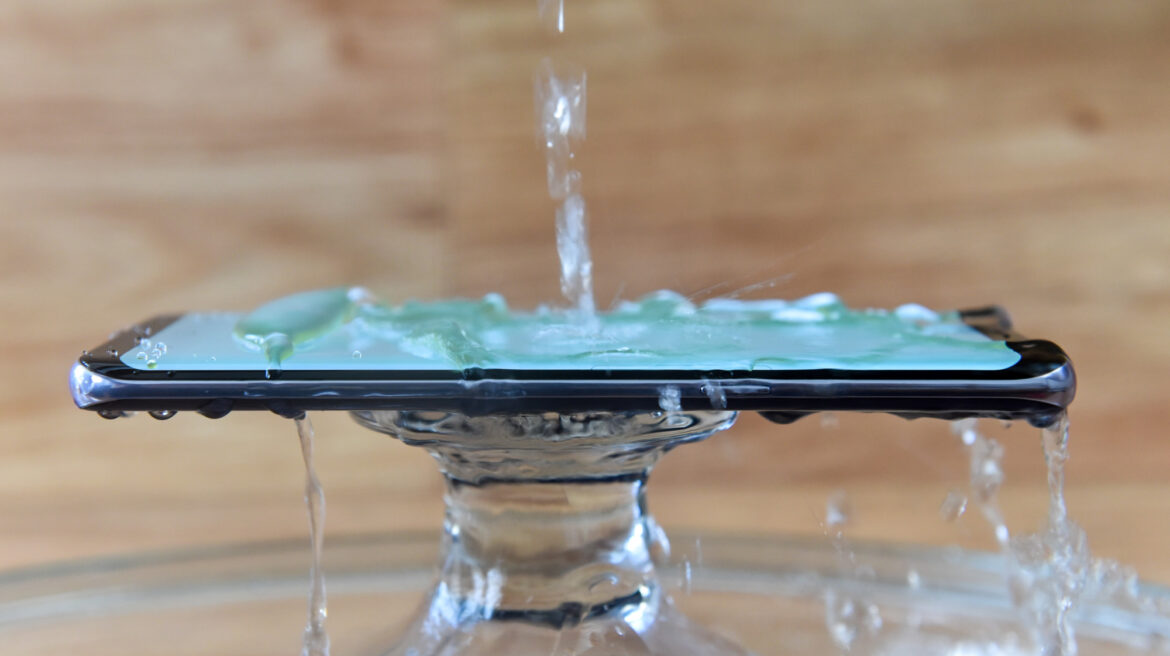
Since the iPhone’s release in 2017, it has consistently been among the most popular smartphones on the market. During the first four years of sales, Apple sold over 100 million models!
Over the years, iPhone has evolved and kept up with consumer demands. Every release has new features in both iPhone software and design.
While this is a good thing, some users are left wondering whether their iPhone has the advertised characteristics of other models. For example, are iPhones waterproof, and if so, which ones?
This post will answer those questions in detail, so keep reading!
Are iPhones Waterproof?
Not really. iPhones are water resistant, which isn’t the same as waterproof. Let’s look at the difference in detail.
What’s Water Resistance?
Items that are water resistant can withstand water penetration to a specific point, but not completely. Something that is water resistant doesn’t have a significant amount of protection from submersion in water because it can only repel water to a certain degree.
Simply put, a water-resistant iPhone shouldn’t go swimming with you.
What Does Waterproof Mean?
Waterproof items are protected from the effects of water. You can submerge them in water without any adverse effects. Unlike water-resistant phones, you can usually use waterproof devices in the shower or pool because they have a high level of permanent protection.
Because iPhones aren’t waterproof, they will die if you leave them in water or any other liquid. It’s best to keep them dry. However, if your phone drops in water, it will probably be okay if you dry it off quickly.
Which iPhones Are Water Resistant?
Water resistance has been a consistent feature from iPhone 7 until the latest version—the iPhone 14. Nevertheless, the level of protection these iPhones have against the water isn’t the same.
The highest level of protection is IP68 under IEC standard 60529, which indicates an iPhone’s ability to be submerged up to 6 meters for no more than 30 minutes. The following iPhones fall into this category.
- iPhone 14 (including Plus, Pro, and Pro Max)
- iPhone 13 (including mini, Pro, and Pro Max)
- iPhone 12 (including mini, Pro, and Pro Max)
iPhone 11 Pro and Pro Max have a rating of IP68 under IEC standard 60529 and are less water resistant. Users can submerge them in water up to 4 meters deep for no more than 30 minutes.
Models with a rating of IP68 under IEC standard 60529 have a maximum depth of 2 meters. As with other models, they are water resistant for 30 minutes. These include:
- iPhone 11 (standard model)
- iPhone XS (including XS Max)
The least water-resistant models have an IP67 rating. Users can only submerge them in water up to one meter deep, but still with a time limit of 30 minutes.
- iPhone SE (2nd generation)
- iPhone X and XR
- iPhone 8 and 8 Plus
- iPhone 7 and 7 Plus
It’s important to note that while the iPhones mentioned above are water resistant, their protection is not permanent. Repeated submersion, even within the time limits and depths listed, will result in a lesser degree of protection. Therefore, Apple recommends avoiding using your iPhone in water.
What to Do if Your iPhone Falls in Water
If your iPhone gets wet, it should be fine if it’s one of the water-resistant models we mentioned previously. However, if it falls in water that is deeper than it can handle (2 to 6 meters, depending on the model) or for more than 30 minutes, you should follow these steps.
- Dry off your iPhone with a soft cloth
- When the exterior is dry, open the SIM tray
- Tap your iPhone with the Lightning port facing down to remove excess liquid
- Place your iPhone in a dry area with good ventilation, perhaps in front of a fan
Whatever you do, don’t use heat to dry your phone! Moreover, avoid inserting any foreign object, such as a cotton swab, into your phone’s ports.
Wait at least five hours or longer to charge your phone. It has to be completely dry inside and out before plugging it in or using wireless charging.
You should also follow these steps if you spill any other liquid, such as coffee, on your phone.
How to Protect Any iPhone From Water Damage
Just because iPhones aren’t waterproof doesn’t mean you can’t take them in the water. You just need the right iPhone protection.
Several cases and waterproof covers make it possible to use your iPhone in a swimming pool, ocean, or anywhere else with water.
A more permanent option may be best if you spend a lot of time doing water activities. Tough cases offer the highest level of iPhone security against water, dirt, and even drops. Be sure to read more here!
If you only use your iPhone in the water from time to time or already have a case you love, perhaps a pouch is your best option. These waterproof bags protect your phone from liquids, making them ideal for water activities. Some even allow you to take high-quality pictures under the water.
Take Your iPhone on All Your Adventures!
So, are iPhones waterproof? Unfortunately, no. Apple has yet to make a model of iPhone that users can take in the pool or use in the shower without worries.
Thankfully, plenty of expertly-designed cases give iPhone users the possibility of taking their phone along on all their adventures—including those in the water. So, check out waterproof cases online, whether you’re a swimmer, diver, or surfer. Then, you won’t have to worry about ruining your iPhone.
And, if you would like to learn more about technology, browse more of our posts!


